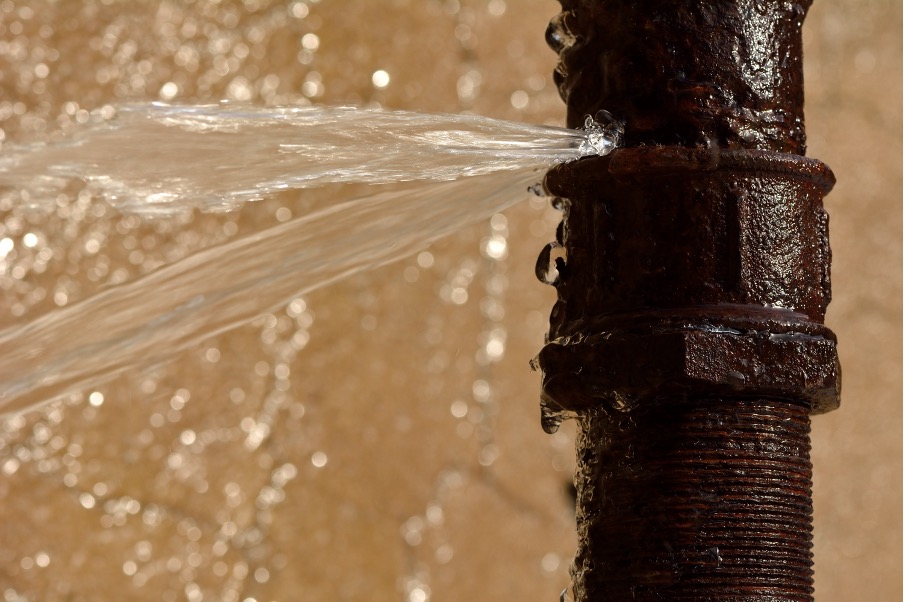Overview To Water Leakage Detection At Home
Overview To Water Leakage Detection At Home
Blog Article
They are making a number of great points on Locating water leaks as a whole in this article following next.

Early discovery of leaking water lines can minimize a potential catastrophe. Besides conserving you money, it will certainly reduce the irritation and disappointment. The moment you find a leakage, calling your plumber for repair work is the best service. Some small water leaks may not be visible. If you can not spot it with your nude eyes, right here are some hacks that assist.
1. Check Out the Water Meter
Every residence has a water meter. Checking it is a surefire way that aids you find leakages. For beginners, shut off all the water sources. Make sure nobody will purge, utilize the faucet, shower, run the cleaning device or dish washer. From there, go to the meter and also watch if it will alter. Since no person is utilizing it, there should be no motions. That indicates a fast-moving leak if it moves. Furthermore, if you identify no changes, wait an hour or 2 and check back again. This means you may have a sluggish leakage that might also be below ground.
2. Check Water Usage
Analyze your water expenses and also track your water usage. As the one paying it, you need to discover if there are any type of disparities. If you identify sudden changes, in spite of your intake being the same, it suggests that you have leaks in your plumbing system. Remember, your water expense need to drop under the same variety each month. An unexpected spike in your expense indicates a fast-moving leak.
A steady boost every month, also with the very same behaviors, shows you have a slow-moving leak that's likewise slowly rising. Call a plumber to completely check your residential or commercial property, specifically if you really feel a warm location on your floor with piping below.
3. Do a Food Coloring Test
When it comes to water intake, 30% comes from commodes. If the color somehow infiltrates your bowl throughout that time without flushing, there's a leakage in between the storage tank as well as dish.
4. Asses Exterior Lines
Don't forget to check your outdoor water lines too. Test spigots by attaching a garden hose pipe. Ought to water seep out of the connection, you have a loosened rubber gasket. Replace this and make certain all links are limited. If you've obtained an automatic sprinkler, it will help get it properly analyzed as well as maintained every year. One little leak can throw away lots of water and also surge your water bill.
5. Evaluate as well as Examine the Scenario
Homeowners should make it a habit to check under the sink counters as well as even inside cupboards for any bad odor or mold and mildew growth. These two red flags suggest a leakage so prompt interest is needed. Doing routine examinations, even bi-annually, can save you from a major issue.
Inspect for stainings and damaging as many home appliances and also pipes have a life span. If you presume leaking water lines in your plumbing system, don't wait for it to escalate.
Early discovery of leaking water lines can reduce a potential calamity. Some small water leaks might not be visible. Examining it is a guaranteed way that aids you find leaks. One little leak can lose lots of water and also spike your water expense.
If you believe leaking water lines in your plumbing system, don't wait for it to intensify.
WARNING SIGNS OF WATER LEAKAGE BEHIND THE WALL
PERSISTENT MUSTY ODORS
As water slowly drips from a leaky pipe inside the wall, flooring and sheetrock stay damp and develop an odor similar to wet cardboard. It generates a musty smell that can help you find hidden leaks.
MOLD IN UNUSUAL AREAS
Mold usually grows in wet areas like kitchens, baths and laundry rooms. If you spot the stuff on walls or baseboards in other rooms of the house, it’s a good indicator of undetected water leaks.
STAINS THAT GROW
When mold thrives around a leaky pipe, it sometimes takes hold on the inside surface of the affected wall. A growing stain on otherwise clean sheetrock is often your sign of a hidden plumbing problem.
PEELING OR BUBBLING WALLPAPER / PAINT
This clue is easy to miss in rooms that don’t get much use. When you see wallpaper separating along seams or paint bubbling or flaking off the wall, blame sheetrock that stays wet because of an undetected leak.
BUCKLED CEILINGS AND STAINED FLOORS
If ceilings or floors in bathrooms, kitchens or laundry areas develop structural problems, don’t rule out constant damp inside the walls. Wet sheetrock can affect adjacent framing, flooring and ceilings.
https://www.servicemasterbyzaba.com/blog/how-to-detect-water-leakage-in-walls/

As a devoted person who reads on Hacks to detect leaks, I think sharing that blog post was a good idea. Enjoyed our content? Please share it. Let someone else find it. Thanks for your time. Please check up our blog back soon.
Report this page